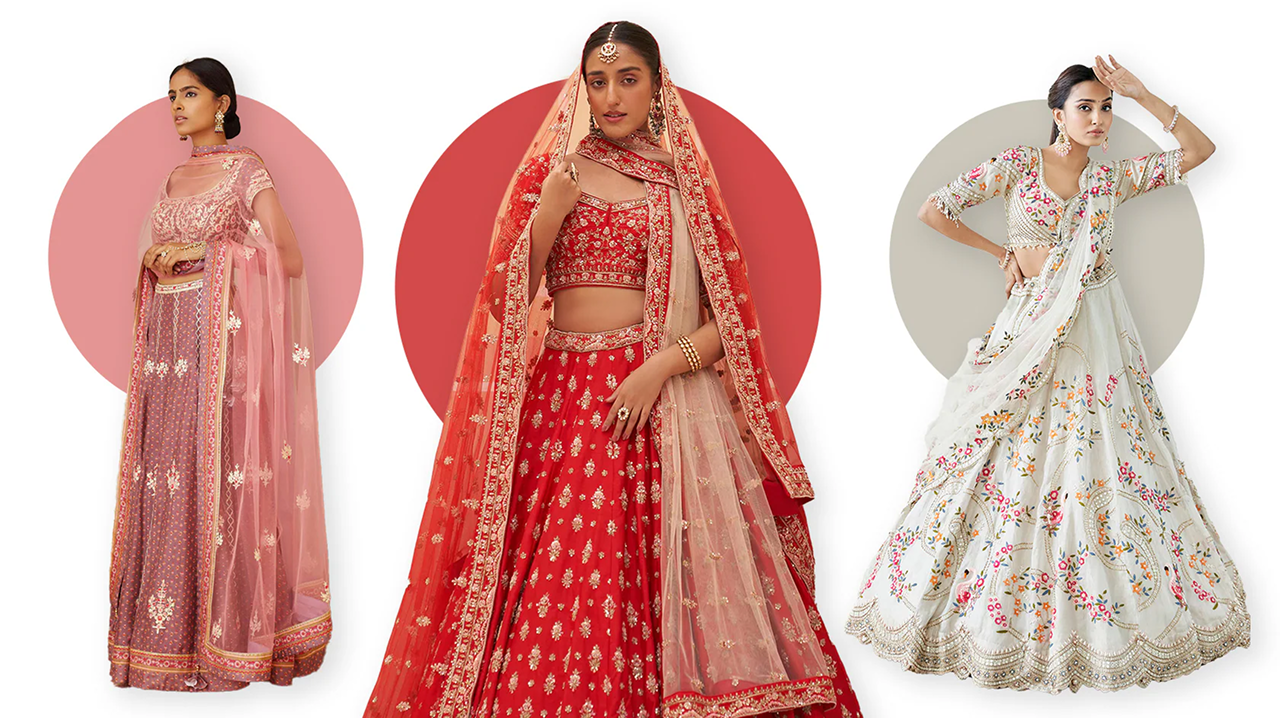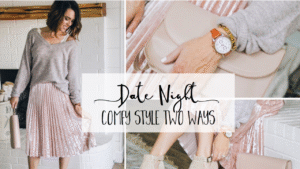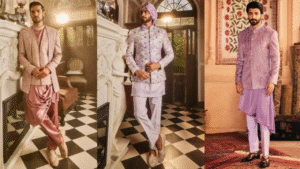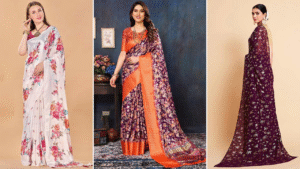Introduction
A bridal dupatta is a very important part of a bride’s outfit. It is a long piece of cloth that the bride wears on her head, shoulders, or body. It adds beauty, tradition, and grace to the bridal look. Different dupatta styles can change how a bride looks. Some styles are simple, and some are very fancy. Brides can choose a style that suits them best. This article will talk about many easy and beautiful bridal dupatta draping styles to try on your wedding day. Wearing a dupatta is not just about covering the head or shoulders. It shows respect for traditions and culture. It also makes the bride feel special and elegant. Every region in India has its own way of wearing a dupatta. Brides can mix tradition with modern styles to create a look that is unique and lovely. Sometimes, the dupatta is light and simple, perfect for small ceremonies. Other times, it is heavy and decorated with embroidery, beads, or stones, perfect for grand weddings. Choosing the right way to drape the dupatta can make a big difference in how the bride looks and feels.
Why Is Dupatta Draping Important?
The way you wear your dupatta changes your whole look. A well-draped dupatta looks elegant and makes you feel like a queen. It also shows your culture and tradition. Brides want to look special on their wedding day, so the dupatta style is very important. Different parts of India have different ways to wear a dupatta. You can try many styles, from simple to royal. A good dupatta drape helps the bride look confident and beautiful. The dupatta is not just a piece of cloth; it tells a story. It connects the bride to her family, culture, and heritage. When you drape the dupatta nicely, it adds grace and charm to your whole outfit. It also helps to cover the head, which is a sign of respect and blessing in many traditions. Moreover, the dupatta can highlight the bridal outfit. If the dupatta is heavy with embroidery, draping it well will show off all the hard work of the designers and tailors. It balances the look by adding color and texture. A well-styled dupatta can also be very practical. It can keep the bride comfortable and confident throughout the long wedding ceremonies. When the dupatta is secure and fits well, the bride can move easily and enjoy her special day without worrying.
Things to Remember Before Draping Your Bridal Dupatta
Before you start draping your bridal dupatta, there are some important things to remember. First, choose the right dupatta that matches your outfit perfectly. It can be light and simple or heavy with beautiful embroidery, but it should complement your dress well. The fabric also matters some fabrics are easier to drape and more comfortable to wear for a long time. Next, make sure to fix the dupatta properly using pins or clips so that it stays in place and does not fall or move around during the ceremony. This will help you stay relaxed and not worry about adjusting it again and again. Comfort is very important because you will wear the dupatta for many hours, often in a busy and active environment. So, it should not feel too tight or heavy on your head or shoulders. It is also good to try the draping style before the wedding day to see how it feels. Finally, pick a draping style that suits your personal style, body shape, and the type of wedding event you are attending. Some styles look better on certain body types or with specific outfits. Choosing the right drape will highlight your best features and add grace to your whole look. Keeping these points in mind will help you look beautiful, feel comfortable, and stay confident on your special day. Don’t forget to practice your dupatta draping a few times so you feel ready and relaxed when the big day comes!
Popular Bridal Dupatta Draping Styles
1. Classic Front Drape
One of the most popular and simple bridal dupatta draping styles is the Classic Front Drape. This style is very traditional and widely used by brides across many regions. To wear it, you place the dupatta gently over your head so that it acts like a veil, covering your head respectfully. Then, let the rest of the dupatta fall evenly on both sides of your shoulders. This creates a balanced and elegant look that highlights the bridal outfit while keeping the dupatta secure and neat. To make sure the dupatta stays in place, you can use pins on both shoulders. This style is perfect for brides who want to keep their look simple, classic, and traditional without too much fuss. It is easy to manage and works well with most bridal outfits, making it a timeless choice for the wedding day.
2. Side-Swept Style
The Side-Swept Style is a beautiful way to wear a bridal dupatta that mixes tradition with a modern look. In this style, you start by placing the dupatta on one side of your head. Then, you bring the dupatta around your back and drape it over the opposite shoulder. This creates a stylish, asymmetrical look that feels fresh and elegant. It is a great choice for brides who want to keep some tradition but also add a little modern touch to their outfit. To make sure the dupatta stays in place all day, use pins to secure it well on your head and shoulder. This style not only looks graceful but also allows easy movement, making it perfect for the busy wedding day.
3. Double Dupatta Drape
The Double Dupatta Drape is a stunning style for brides who want a royal and grand look on their wedding day. In this style, the bride wears two dupattas instead of one. The first dupatta, which is usually lighter and simpler, is placed gently over the head like a veil. Then, the second dupatta, often heavier and more decorated, is draped over the shoulders or arms. This layering gives the bride a rich and elegant appearance, perfect for big weddings or very traditional ceremonies. To keep both dupattas in place throughout the day, it is important to use pins carefully and securely. This style not only looks beautiful but also adds a special touch of grace and tradition to the bridal outfit.
4. Lehenga Style Drape
The Lehenga Style Drape is a favorite among brides who wear lehengas. This way of draping the dupatta looks both elegant and practical. The dupatta is worn like a scarf—one end is placed over one shoulder, while the other end is tucked neatly into the waistband of the lehenga skirt. This keeps the dupatta secure and helps the bride move easily without worrying about it slipping off. You can let the dupatta flow in front or at the back, depending on what you like best. This style not only looks graceful but also highlights the beautiful embroidery or design of the lehenga and dupatta. It is perfect for brides who want a stylish yet comfortable look on their big day.
5. Gujarati Style Drape
The Gujarati Style Drape is a popular and traditional way of wearing the dupatta, especially from the state of Gujarat. In this style, the dupatta is placed over one shoulder—usually the right shoulder and then brought across the front of the body to the opposite side. It covers the chest neatly and gives a very tidy, classic look. This draping style is loved by many brides because it shows off the design of the dupatta well and looks graceful. To wear this style, place the dupatta on your right shoulder, then bring it across your chest to the left side. Finally, tuck or pin the dupatta at the waist or on the left shoulder to keep it secure. This look is perfect for brides who want a traditional yet elegant appearance on their wedding day.
6. Punjabi Style Drape
The Punjabi Style Drape is a traditional way brides in Punjab wear their dupatta. In this style, the dupatta is first placed over the head, covering it softly. Then, both ends of the dupatta are brought from the back over the shoulders to the front. This creates a neat and balanced look that is simple but stylish. To achieve this style, start by placing the dupatta gently on your head. Next, take both ends of the dupatta and bring them around your back so that they come over your shoulders and rest in the front. Finally, use pins to fix the ends securely on your shoulders, so the dupatta stays in place throughout the day. This drape is perfect for brides who want a traditional look with a touch of elegance.
7. Cape Style Drape
The Cape Style Drape is also very practical for brides who want to dance, walk, and enjoy their wedding functions without constantly adjusting their dupatta. It gives a fresh and youthful look while still keeping the traditional touch through the fabric and embroidery. You can choose a sheer or lightweight dupatta for this style so it doesn’t feel heavy or bulky. Adding some beautiful brooches or pins on the shoulders can make the look even more elegant and secure. This draping style works well with lehengas, sarees, and even anarkalis. Brides who want to blend modern fashion with tradition will love this easy-to-wear and chic dupatta style. It lets you shine and feel comfortable at the same time on your special day.
8. Side Pleated Drape
The Side Pleated Drape is a graceful and tidy way to wear your bridal dupatta. By creating neat pleats on one side, it adds structure to your look while keeping the rest of the fabric flowing freely, giving a perfect balance of style and comfort. This style helps to keep the dupatta secure, so you don’t have to worry about adjusting it again and again during your wedding functions. It works beautifully with lehengas, sarees, and even salwar suits. You can choose a dupatta with beautiful embroidery or borders to make the pleats stand out even more. This drape style is perfect for brides who want to look elegant and polished but prefer a simple, fuss-free look. It also pairs well with statement jewelry and a neat hairstyle, completing a charming bridal appearance.
9. Back Drape Style
The Back Drape Style is a unique and elegant way to wear your bridal dupatta. Unlike traditional front-heavy drapes, this style keeps the front simple and clean, while letting the dupatta flow beautifully down your back. It gives a royal and graceful look, perfect for brides who want to stand out in a subtle way. This drape works very well with lehengas and sarees, especially those with detailed embroidery or heavy work on the dupatta, so the back looks stunning as you move. It also allows more freedom of movement and keeps your face clear, making it easier to show off your makeup and jewelry. To keep the dupatta secure, use good-quality pins on the shoulder and back. This style is perfect for brides who want a blend of tradition and modern elegance on their special day.
Tips for Choosing the Right Style for You
When choosing the right bridal dupatta style, it’s important to think about a few things to look your best and feel comfortable. First, your body type matters a lot. If you are short, it’s better to choose a light and simple dupatta drape. Heavy or very long dupattas can feel hard to manage and may look overwhelming. On the other hand, if you are tall, you can try longer or heavier dupattas that make you look even more elegant and royal. Next, think about your outfit type. Your dupatta style should match the dress you are wearing. For heavy lehengas with lots of embroidery and work, it is better to keep the dupatta simple or go for styles like side pleats. This will balance your look and not make it too heavy. If you are wearing a light saree or suit, you can try more flowing dupatta styles or trendy cape styles that add a modern touch. Comfort is very important. You will wear the dupatta for many hours, so make sure you can move freely, sit, and dance without any trouble. Pick a style that feels good and stays in place.
How to Keep Your Dupatta in Place
Keeping your dupatta in place is very important, especially on a busy wedding day. Here are some easy tips to help you:
Use safety pins or small clips to fix the dupatta well. Pin it on your shoulders or near the head so it doesn’t slip. If you can, ask a helper like a family member or friend to pin your dupatta before the main events. They can help make sure it stays neat and safe. Some blouses come with small chains or buttons inside to hold the dupatta. You can use these to keep the dupatta from moving. Try to avoid pinning the dupatta on areas with heavy embroidery or delicate work. Pins can damage the fabric or thread, so pin on plain parts.
Conclusion
Your bridal dupatta is very special. It completes your wedding look and shows your tradition. Trying different draping styles can help you look unique and beautiful. Remember to pick a style that fits your comfort and outfit. Whether you choose classic, modern, or royal drapes, wear your dupatta with confidence and a bright smile. When your dupatta is perfect, you will feel more graceful and happy all day. Your bridal day will be even more special and memorable with the perfect dupatta style. So enjoy your big day and shine like a queen!



